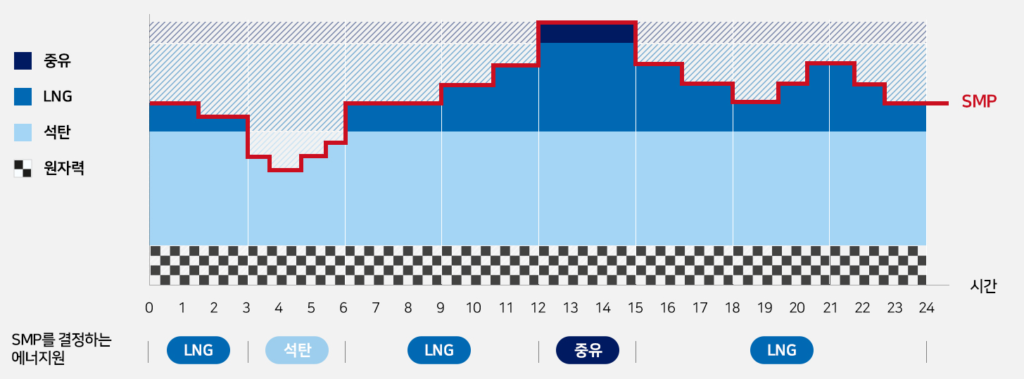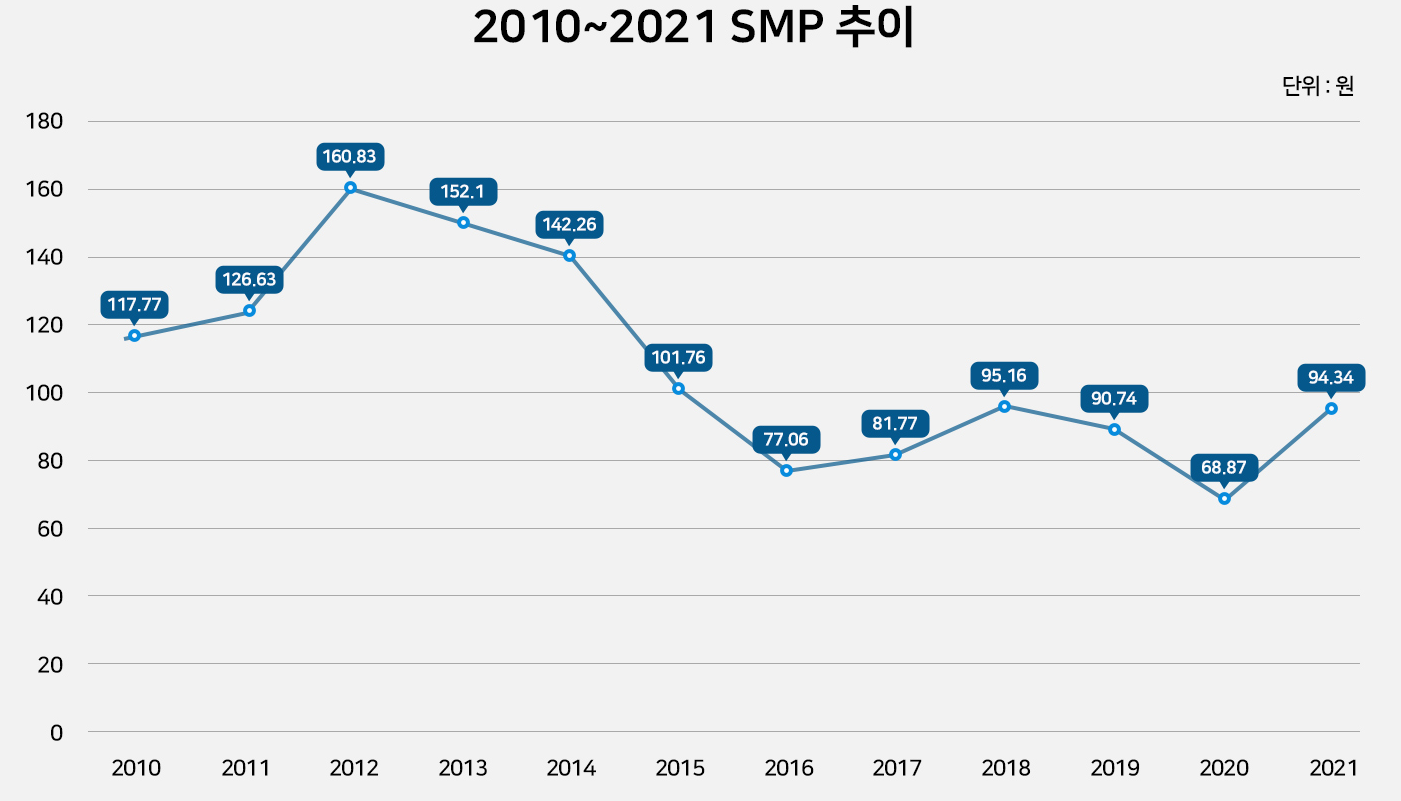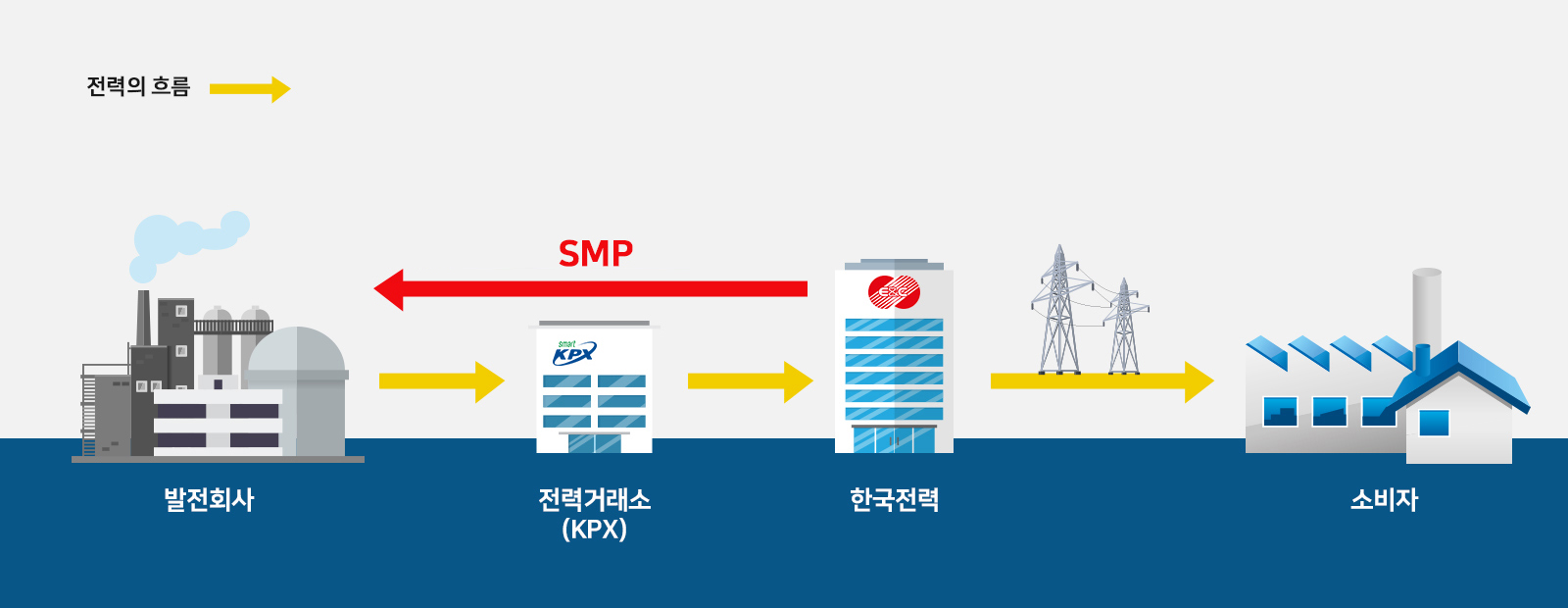SMP(System Marginal Price) in South Korea is a marginal price at which electricity generated by a power generation company is sold to Korea Electric Power Corporation (KEPCO), it is also called wholesale electricity price in Korea. Due to the structure of the electricity market in Korea, KEPCO purchases electricity generated from all power plants through the Korea Power Exchange and supplies it to consumers.
Such as the above structure image, Electricity used in Korea is a structure in which the Korea Electric Power Company (KEPCO) purchases electricity from power plants through the auction of the Korea Power Exchange (KPS) and supplies it to businesses and consumers such as households.
How is SMP determined in Korea?
The Korean electricity market does not buy and sell electricity in real time, but predicts the amount of electricity needed the next day and trades electricity accordingly.

1) KPX predicts how much electricity will be needed the next day on an hourly basis, and then confirms with power generation companies how much electricity can be generated the next day.
2) Looking at the amount of electricity needed (demand) and the amount of power generation possible (supply) for each time slot on the next day, the power plant with the lowest generation cost will produce electricity for each time slot.
3) If you instruct power plants to produce electricity one after another, starting with power plants with low generation costs, there will come a point when all the demand for that time period is met.
At this time, the power generation cost of the power plant instructed is the SMP. In other words, SMP is the generation cost of the most expensive power plant among power plants generating electricity during that time period. These are mainly commercial power plants.
As shown in the image, SMP is determined by the generation cost of coal power plants during the early morning hours (3:00-6:00) when electricity demand is low, and by the generation cost of heavy oil power plants during the daytime (12:00-15:00) when electricity demand is high. do. Usually, the generation cost is low in the order of nuclear power – coal – natural gas (LNG) – heavy oil, but on average, it can be seen that the generation cost of most LNG power plants determines the SMP.
Apart from the above, Korea's SMP fluctuates according to international oil prices!
As the price of LNG imported into Asia is mostly linked to oil prices, SMP also tends to fluctuate with oil prices. For example, in 2021, when the global economic recession and low oil prices continued due to Corona 19, the SMP recorded around 50 won/kWh

SMP Trend in South Korea
Given the increasing debt and capital erosion of Korea Electric Power Corporation (KEPCO), the introduction of an SMP price cap for electricity is essential to prevent a further increase in electricity prices for consumers. However, despite strong opposition from private power generators, the Korean government has decided to turn off the SMP price cap card from March 2023. As a consequence, electricity rates sold to households are expected to increase by 17% to 141.9 WON/kWh in the second half of 2023, exacerbating the already soaring utility bills and contributing to inflation.
The interdependence of politics and economics in this situation is evident, as the failure to introduce the SMP cap could lead to electoral defeat for politicians who are perceived to be responsible for the rise in prices. Therefore, it is will be crucial that the government takes into account the impact of its decision on the lives of the common people and on the economy as a whole.


